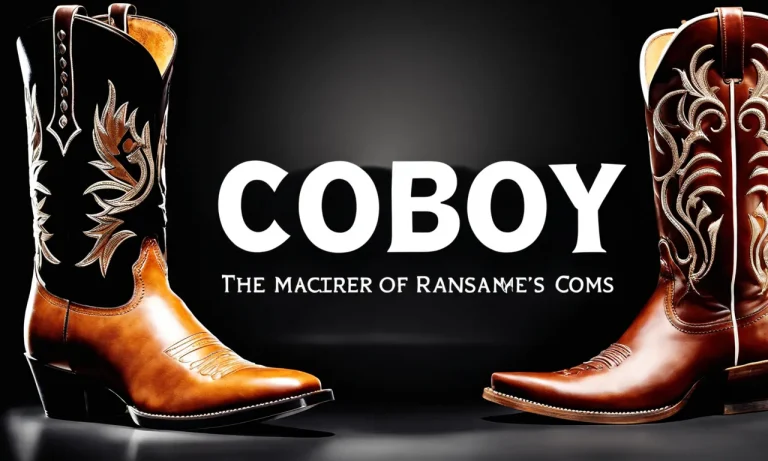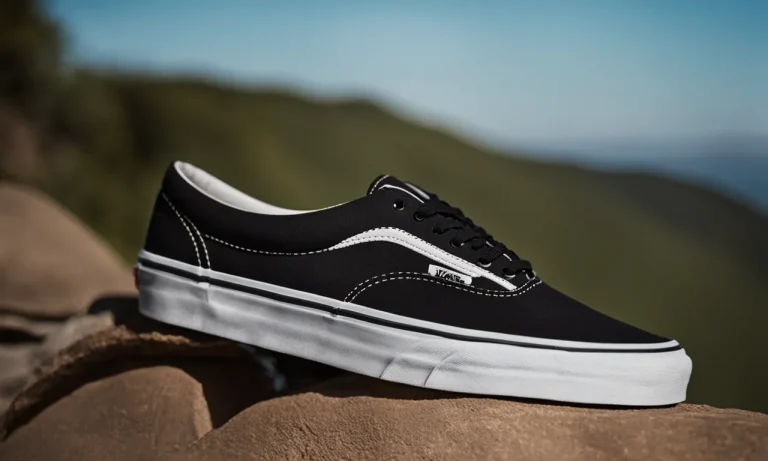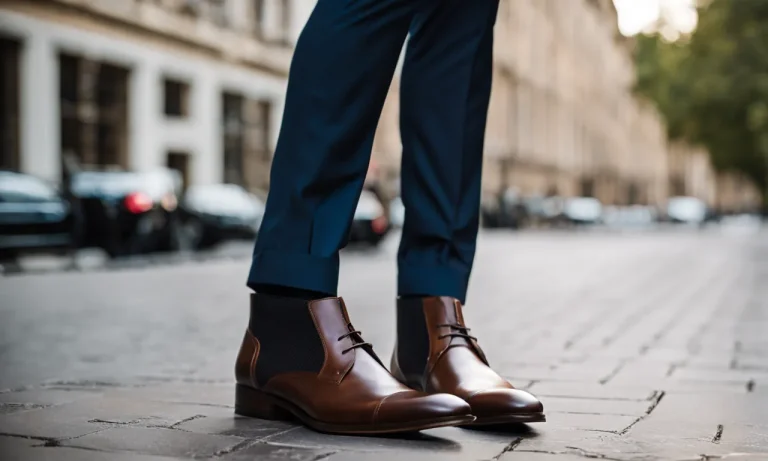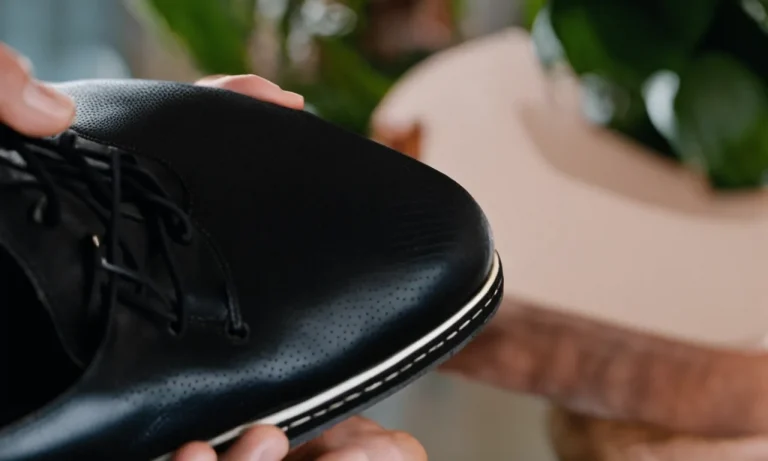Buying the right shoe size for your growing child can be confusing. With different sizing systems and variables like foot width, it’s hard to know exactly what size to get. If you’re wondering how kids shoe sizes work, you’ve come to the right place.
If you’re short on time, here’s a quick answer: Kids shoe sizes correlate to foot length and are measured in centimeters or inches. Sizes vary across brands and styles, so it’s best to have your child’s feet professionally measured each time you buy new shoes.
In this comprehensive guide, we’ll cover everything you need to know about kids shoe sizes. You’ll learn about the different sizing systems, how to measure your child’s feet properly, factors that affect size, how to allow room for growth, width sizing, international size conversions, and tips for getting the perfect fit.
Kids Shoe Sizing Systems
When it comes to buying shoes for kids, it’s important to understand the different sizing systems used around the world. This comprehensive guide will help you navigate through the various sizing systems so you can find the perfect fit for your little one.
Centimeter Sizing
Centimeter sizing is commonly used in many countries, including Europe. It measures the length of the foot in centimeters and provides a more accurate fit. To determine your child’s shoe size in centimeters, measure their foot from heel to toe and round up to the nearest whole centimeter.
Keep in mind that different shoe brands may have slight variations in their centimeter sizing, so always refer to the specific brand’s size chart.
U.S. Sizing
In the United States, shoe sizes for kids follow the U.S. sizing system. This system is based on age and foot length. For example, a size 5C would indicate a shoe size for a child who is approximately 12-18 months old with a foot length of about 4.75 inches (12.1 cm).
As your child grows, the sizes will progress from toddler sizes (C) to youth sizes (Y).
U.K. Sizing
In the United Kingdom, kids shoe sizes are based on the U.K. sizing system. This system is similar to the U.S. system, but with some slight differences. The U.K. sizes progress from infant sizes (1-4) to junior sizes (10-3).
It’s important to note that U.K. sizes are also used in some other countries, such as Australia and New Zealand.
European Sizing
European shoe sizes are widely used in many countries across Europe. The sizes are based on the length of the foot in centimeters, similar to the centimeter sizing system. European shoe sizes generally range from size 16 (for infants) to size 48 (for adults).
It’s important to note that European sizes may not always be labeled as such, so it’s helpful to refer to a size conversion chart when shopping for shoes internationally.
International Size Conversions
When shopping for shoes internationally or online, it’s essential to be familiar with international size conversions. Different countries may use different sizing systems, so having a conversion chart handy can help you find the right size for your child.
Websites like www.shoesizingcharts.com provide comprehensive size conversion charts that can be a valuable resource when shopping for kids shoes from different countries.
Remember, finding the right shoe size for your child is crucial for their comfort and foot health. Take accurate measurements and refer to size charts provided by the shoe brand or retailer to ensure a proper fit.
And don’t forget to consider their growing feet when purchasing shoes, as kids’ feet tend to grow quickly!
Measuring Your Child’s Feet
Ensuring that your child’s shoes fit properly is essential for their comfort and foot health. Here are some methods to accurately measure your child’s feet:
Use a Brannock Device
The Brannock Device is a widely recognized tool used by shoe stores and podiatrists to measure foot size. It measures both the length and width of the foot, providing accurate measurements. By using a Brannock Device, you can easily determine your child’s shoe size and find the perfect fit.
Trace Their Feet
If you don’t have access to a Brannock Device, another method is to trace your child’s feet on a piece of paper. Place their foot flat on the paper and trace around it. Then, measure the length from the heel to the longest toe. This will give you an approximate measurement of their foot length.
Measure Foot Length
When measuring your child’s foot length, use a ruler or tape measure to measure from the heel to the tip of their longest toe. Make sure they are standing up straight and their weight is evenly distributed. Repeat this process for both feet, as there may be a slight difference in size.
Allow Room for Growth
Children’s feet grow rapidly, so it’s important to choose shoes that have room for growth. Aim for about a half-inch of extra space at the front of the shoe to accommodate growth. However, avoid shoes that are too big, as they can cause discomfort and increase the risk of tripping or falling.
Consider Foot Width
In addition to foot length, it’s important to consider your child’s foot width when selecting shoes. Some children have narrow feet, while others have wider feet. Look for shoes that provide enough room for their feet to move comfortably without being too tight or too loose.
Remember, properly fitting shoes are crucial for your child’s foot development and overall comfort. If you’re unsure about sizing or have concerns about your child’s feet, it’s always a good idea to consult with a pediatric podiatrist.
Factors That Affect Shoe Size
When it comes to choosing the right shoe size for your child, there are several factors that can affect their fit and comfort. Understanding these factors can help you make informed decisions and ensure that your child’s feet are well-supported. Here are some key factors to consider:
Age
Children’s feet grow rapidly during their early years. It is recommended to have their feet measured every three to four months to accommodate their growth. According to a study conducted by the American Podiatric Medical Association, children’s feet can grow up to two sizes per year during the first four years of life. It’s important to keep track of their shoe size and not rely solely on their age to determine the correct fit.
Gender
On average, boys’ feet tend to be slightly larger than girls’ feet. However, this can vary between individuals, so it’s important to measure your child’s feet regardless of their gender. A study published in the Journal of Foot and Ankle Research found that boys’ feet tend to be wider than girls’ feet, especially in the forefoot area. Taking this into consideration can help you find the right shoe width for your child.
Brand and Style
Different shoe brands and styles may have variations in sizing. It’s always a good idea to try on shoes before purchasing them, especially if you’re trying a new brand or style. Keep in mind that certain brands may run smaller or larger than others, so it’s important to read reviews or consult size charts if purchasing online.
Time of Day
Your child’s feet can swell throughout the day, so it’s best to measure their feet in the afternoon or evening when they are at their largest. This ensures that you choose a shoe size that allows for proper growth and comfort throughout the day.
Sock Thickness
The thickness of the socks your child wears can also affect the fit of their shoes. If your child typically wears thicker socks, you may need to size up to accommodate for the extra bulk. On the other hand, if they wear thin socks, you may need to size down for a snugger fit.
Foot Conditions
Foot conditions such as flat feet, high arches, or wide feet can also impact shoe size. If your child has any of these conditions, it is recommended to consult with a podiatrist or shoe fitting specialist to ensure they are wearing the correct size and type of shoes.
Remember, finding the right shoe size for your child is essential for their foot health and overall comfort. By considering these factors and regularly measuring their feet, you can make sure they are stepping in the right direction.
Tips for Finding the Perfect Fit
Have Feet Measured Professionally
One of the most important tips for finding the perfect fit for your child’s shoes is to have their feet measured professionally. This can be done at a shoe store or by a podiatrist. Professional measurements ensure accurate sizing and help you choose the right shoe size for your child’s growing feet.
Additionally, keep in mind that each foot may be slightly different in size, so measure both feet and use the larger measurement when selecting shoes.
Try Shoes On In-Store
When shopping for kids’ shoes, it’s always best to try them on in-store. This allows your child to walk around and test the fit and comfort of the shoes. Encourage your child to walk, run, and jump to ensure the shoes provide enough room for movement.
Keep in mind that shoe sizes can vary between brands, so trying on different styles and brands can help you find the best fit for your child.
Let Your Child Walk Around
When trying on shoes, it’s important to let your child walk around in them for a few minutes. This helps you assess the comfort and fit of the shoes. Pay attention to any signs of discomfort or complaints from your child.
Shoes should provide enough room for their toes to wiggle and flex, without being too loose or too tight.
Check Toe Room
Check the toe room of the shoe to ensure there is enough space for your child’s toes to move freely. The shoe should have about a thumb’s width of space between the longest toe and the front of the shoe. This allows for natural growth and prevents discomfort or injury.
Make Sure Heels Don’t Slip
While checking the fit, make sure the heels of the shoes don’t slip off when your child walks. The shoes should provide a secure fit around the heel without rubbing or causing blisters. This helps prevent accidents or discomfort while wearing the shoes.
Consider Inserts for Problem Feet
If your child has specific foot conditions or needs additional support, consider using shoe inserts. Inserts can provide extra cushioning, arch support, or stability, depending on your child’s needs. Consult with a podiatrist to determine the best type of insert for your child’s feet.
Buy Athletic Shoes 0.5-1 Size Up
When buying athletic shoes for your child, it’s recommended to go 0.5-1 size up from their regular shoe size. This provides extra room for their feet to expand during physical activity and prevents discomfort or injury.
It’s also important to consider the type of socks your child will be wearing with the shoes to ensure a comfortable fit.
Conclusion
Finding the perfect shoe size for your child’s growing feet can seem complicated. But armed with the right information on sizing systems, measurement techniques, and fit tips, you can ensure your kiddo’s shoes fit comfortably now and accommodate growth.
Remember to have feet sized each time you shop, allow a thumbnail of toe room, and watch for slipping heels. With the proper pair, your child will be stepping out in style and comfort.






